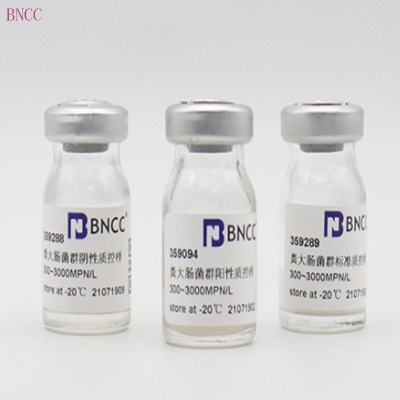-
Categories
-
Pharmaceutical Intermediates
-
Active Pharmaceutical Ingredients
-
Food Additives
- Industrial Coatings
- Agrochemicals
- Dyes and Pigments
- Surfactant
- Flavors and Fragrances
- Chemical Reagents
- Catalyst and Auxiliary
- Natural Products
- Inorganic Chemistry
-
Organic Chemistry
-
Biochemical Engineering
- Analytical Chemistry
-
Cosmetic Ingredient
- Water Treatment Chemical
-
Pharmaceutical Intermediates
Promotion
ECHEMI Mall
Wholesale
Weekly Price
Exhibition
News
-
Trade Service
The basic principles of molecular biology determine how proteins are formed within cells, which are divided into two stages, transcription and translation
.
During transcription, information stored in DNA is copied into messenger RNA (mRNA
).
Subsequently, during translation, ribosomes assemble proteins
one amino acid at a time according to instructions on the mRNA.
The understanding of this process is so fundamental that the direction of information flow from DNA to mRNA to proteins is known as the "central dogma" of molecular biology, a term
coined by Nobel laureate Francis Crick.
Since the advent of systems biology 20 years ago, scientists have tried to determine how cells regulate transcription and translation processes based on gene expression data: which mRNAs and proteins are produced
under what conditions.
Interpreting how cells regulate these processes will provide insight into how cells process environmental information to regulate their behavior
.
It will also allow scientists to develop strategies for precisely manipulating protein levels--- a key step in
synthetic biology.
In synthetic biology, scientists seek to solve problems
in medicine, manufacturing, and agriculture by redesigning and reengineering genes and their interactions.
In a new study, researchers from the University of California, San Diego have found for the first time that gene expression changes in the model bacterium E.
coli occur almost exclusively during the transcriptional phase
as cells grow.
They provide a simple quantitative formula that links
regulatory control to mRNA and protein levels.
The results of the study were published in the December 9, 2022 issue of Science under the title "Principles of gene regulation quantitatively connect DNA to RNA and proteins in bacteria.
"
Corresponding author Terry Hwa, Distinguished Professor of Physics and Biological Sciences at the University of California, San Diego, said, "Ultimately, what we provide is a quantitative relationship that scientists can use to explain how pathogenic bacteria evade antibiotic treatment and host immunity
.
" In the context of synthetic biology, this would allow bacteria to be redesigned and reengineered to detect and clean up toxic waste, or to be sent into the body to kill cancer cells
.
”
The central law of molecular biology is linear, from DNA to mRNA to protein
.
This is simple at the individual gene level: start a gene, make mRNA, and use mRNA to make proteins
.
Typically, biologists think of gene regulation as linear because they design experiments that alter only a single gene or a handful of genes without having a significant impact
on the entire cellular system.
Principles
for regulating gene expression in E.
coli.
Image from Science, 2022, doi:10.
1126/science.
abk2066
.
According to this idea, making twice as much mRNA would produce twice as many proteins; However, when considered at the system level, all genes are together, this is not true, and the linear way of thinking about the central law does not hold
.
This is because the cell has to deal with certain global constraints
.
For example, the total protein concentration in cells is approximately constant
.
When the environment changes and cells adapt by regulating the expression of certain genes, these global constraints force additional changes not only in the expression of these genes, but also in the expression of other genes that are not directly regulated
.
While systems biologists didn't take these global constraints into account when writing equations to model gene expression, the HWA team looked at the problem from the
opposite perspective.
They start with these global constraints and then make quantitative statements with absolute measurements, rather than the relative measurements
that are commonly used.
"We put a lot of time and effort into quantifying these changes so that we can filter out the small changes
that are really distracting on a global scale," Hwa said.
Absolute quantitative measurements will enable one to quantitatively link mRNA levels to protein levels and vice versa
.
One cannot make such a statement
based on relative measurements.
”
Hwa believes the research will reshape the way gene expression and regulation are taught in biology textbooks and classrooms around the world, saying it is at odds with what he currently teaches in his own classrooms
.
Controlling gene expression is a complex process
.
A good design rule is essential so that the same genetic circuit can work
under multiple conditions.
Currently, scientists often see genetic circuits they spend so much effort developing in one environment fail
in another.
"We were using the wrong framework
.
Now, the research has a simple recipe that can be used to decipher gene-gene interactions in bacterial responses and can be used to more efficiently engineer genetic circuits in synthetic biology, helping to solve some of the world's pressing problems
in biotechnology and health sciences.
”
Principles of gene regulation quantitatively connect DNA to RNA and proteins in bacteria.
Science, 2022, doi:10.
1126/science.
abk2066.
Source: | Biovalley
edited | Swagpp
Click "Read Original" below to download the Mace Medical APP!





